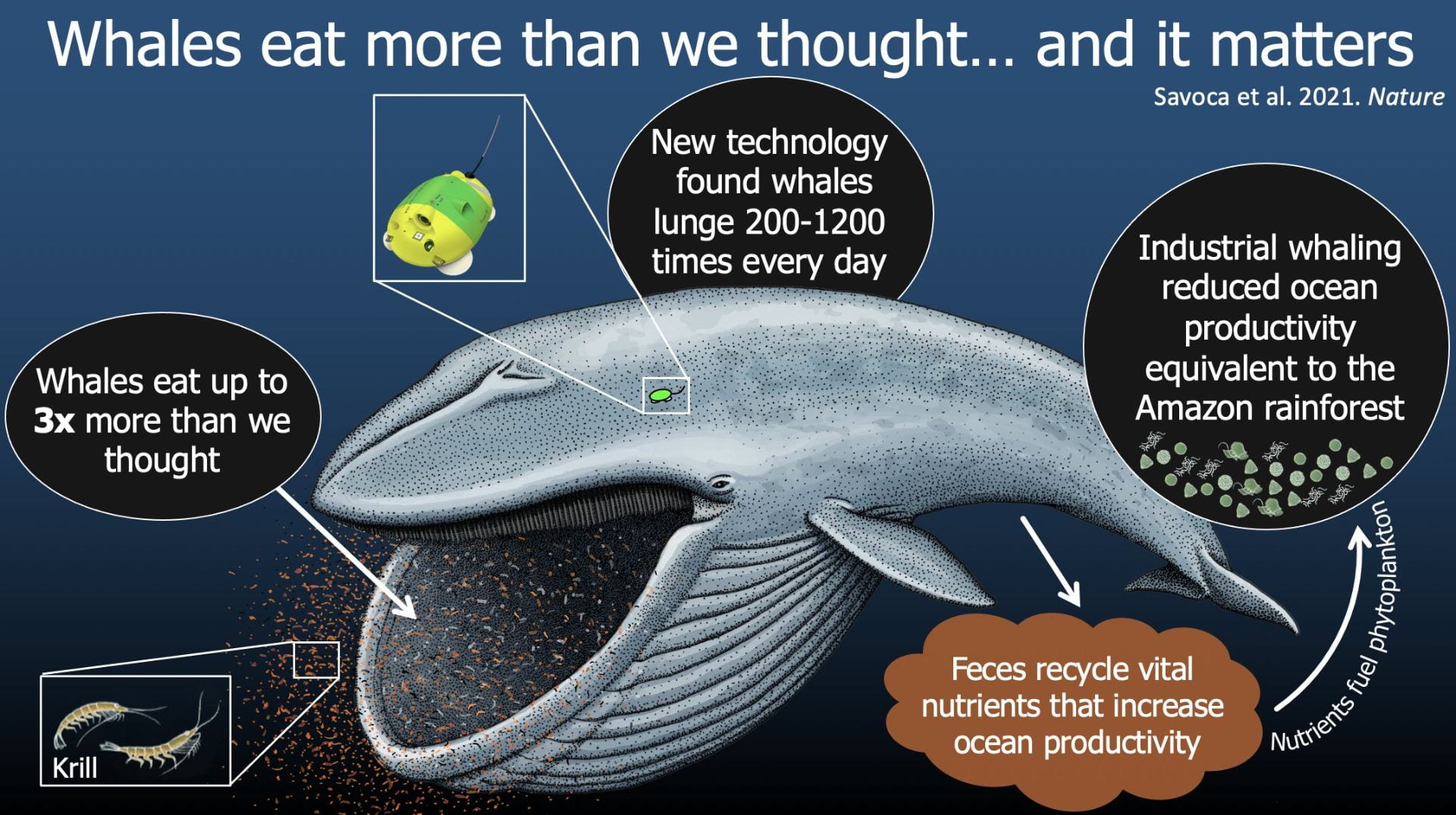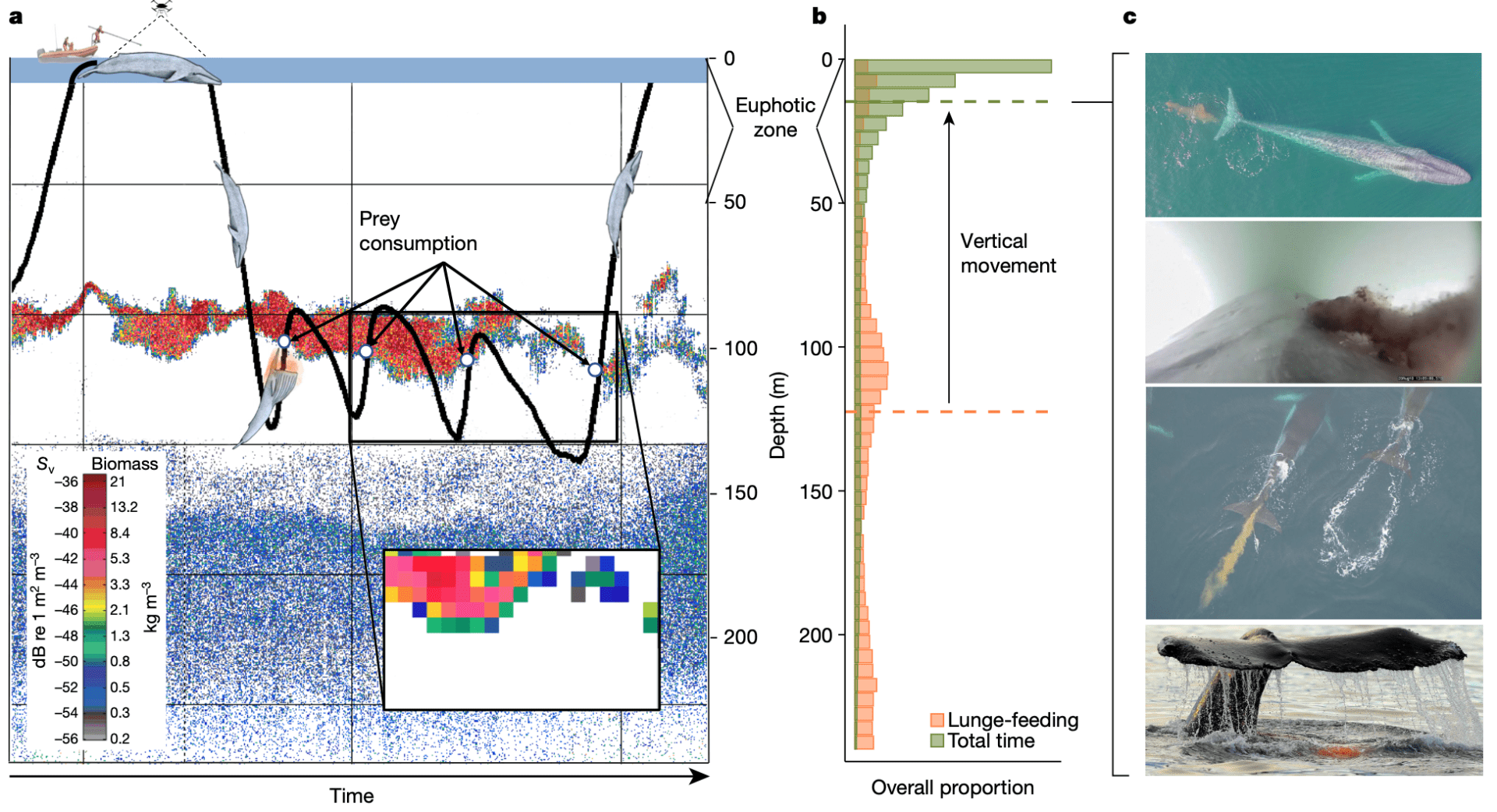 Infographic (c) Stephanie Brodie
Infographic (c) Stephanie Brodie
From 1910 to 1970, humans killed an estimated 1.5 million baleen whales in the frigid water encircling Antarctica. They were hunted for their blubber, baleen – the filtering fringe they have in place of teeth – and meat. One might assume that from the perspective of krill – the tiny shrimp-like creatures the whales feast on – this would be a boon. Yet the krill are at a fraction of their historical biomass.
With these new consumption estimates, the researchers calculated that the early 20th- century abundance of krill in the Southern Ocean was about five times what it is now in order to feed the pre-whaling whale population. This implies a complex role for whales in their ecosystems where the decline or recovery of their populations is strongly tied to overall ecosystem productivity and functioning.
 Figure 1. Fieldwork needed to measure whale size, behavior, and the density of the prey they eat. The vertical difference in foraging and feces may redistribute nutrients to keep marine ecosystems flowing.
Figure 1. Fieldwork needed to measure whale size, behavior, and the density of the prey they eat. The vertical difference in foraging and feces may redistribute nutrients to keep marine ecosystems flowing.
Summary: Baleen whales influence their ecosystems through immense prey consumption and nutrient recycling. It is difficult to accurately gauge the magnitude of their current or historic ecosystem role without measuring feeding rates and prey consumed. To date, prey consumption of the largest species has been estimated using metabolic models based on extrapolations that lack empirical validation. Here, we used tags deployed on seven baleen whale (Mysticeti) species (n = 321 tag deployments) in conjunction with acoustic measurements of prey density to calculate prey consumption at daily to annual scales from the Atlantic, Pacific, and Southern Oceans. Our results suggest that previous studies have underestimated baleen whale prey consumption by threefold or more in some ecosystems. In the Southern Ocean alone, we calculate that pre-whaling populations of mysticetes annually consumed 430 million tonnes of Antarctic krill (Euphausia superba), twice the current estimated total biomass of E. superba, and more than twice the global catch of marine fisheries today. Larger whale populations may have supported higher productivity in large marine regions through enhanced nutrient recycling: our findings suggest mysticetes recycled 1.2 × 104 tonnes iron yr−1 in the Southern Ocean before whaling compared to 1.2 × 103 tonnes iron yr−1 recycled by whales today. The recovery of baleen whales and their nutrient recycling services could augment productivity and restore ecosystem function lost during 20th century whaling.
M.S. Savoca, M.F. Czapanskiy, S.R. Kahane-Rapport, D.E. Cade, W.T. Gough, J.A. Fahlbusch, K.C. Bierlich, P.S. Segre, J.Di Clemente, G.S. Penry, D.N. Wiley, J. Calambokidis, D.P. Nowacek, D.W. Johnston, N.D. Pyenson, A.S. Friedlaender, E.L. Hazen, J.A. Goldbogen, 2021. Baleen whale prey consumption based on high-resolution foraging measurements. Nature. 599, 85–90. PDF
